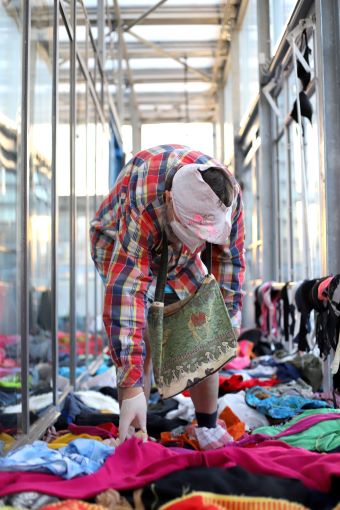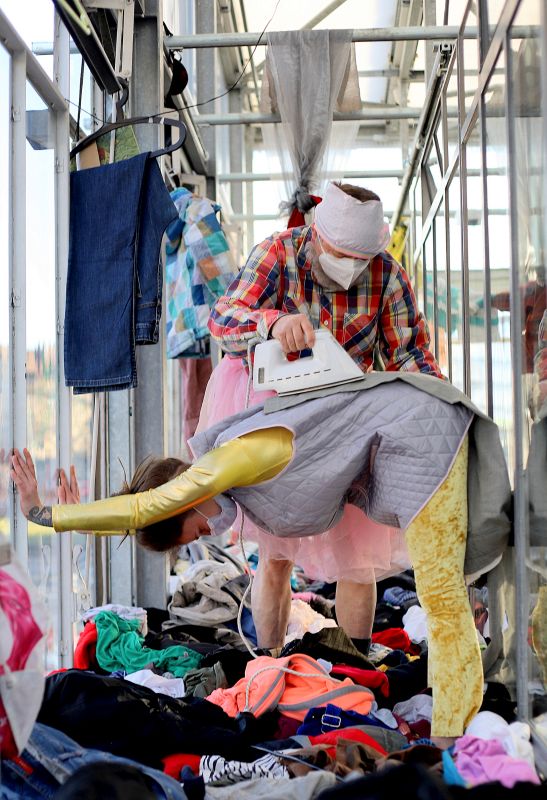How to deal with the Homeless
Essay by Jan Markowsky.
An increasingly visible problem: Homelessness in Berlin.
Over the last twenty years, the rental market in Berlin has gone from being a tenant’s market to something far more landlord-friendly. Rents have increased and there is a lack of properties available for those with empty bank accounts. Recent anti-misappropriation regulation in the Berlin City Senate cites a housing emergency. People who find themselves in hazardous economic circumstancesare more likely to lose their homes and less likely to find a new one. People with no fixed abode are at a serious disadvantage on the Berlin housing market. To a large part, homelessness is a homemade problem. In addition come those who end up on the streets after escaping desperate situations in their home countries, and have failed in their attempts to provide for themselves and their families in Berlin. These people have an even worse chance of finding somewhere to rent.
The systematic marginalisation of both groups has led to a massive increase in the number of Homeless on the street. Exact figures are unavailable but the fact alone that in Berlin Mitte people find shelter under every bridge crossing the Spree is a clear signal. If the state Senator for Social Issues keeps his word, we will soon have reliable figures. Secretary of state Geisel promised a census of the homeless for 2017.
Displacement does not help.
No one wants the homeless or beggars around. They can go wherever they want, as long as it’s ’ Not In My Backyard’. Out of sight, out of mind. After they have been moved on, these ‘intruders’ just disappear, go somewhere else.
But displacement is not a solution. The ‘offensive’ homeless go elsewhere, get displaced from there as well and eventually end up back where they started. Displacement doesn’t offer any improvement in conditions for these assumed delinquents, but it can reinforce disruptive behaviours.
The actual and the imagined disruption of living with the homeless is an expression of the marginalisation of people. Displacement is extreme exclusion. If people are bothersome, it is better to talk to them, eye to eye, person to person.
Not all Homeless are the same.
Life on the street is hard. Escape is limited to begging, drinking and/or drug taking. But, this is and isn’t true. The fact is many homeless suffer from addiction, but by no means all. It’s true that many homeless beg, but by no means all. Everyone reacts differently to the experience of losing their home. The homeless are much less alike than they appear at first sight. You don’t look at someone in a white shirt and suit and see someone homeless, you only see the drug-addicted beggar. By no means do all the homeless beg. By no means are all the homeless disruptive. By no means are all the homeless dirty.
If someone who is homeless has a psychotic episode and sees the world differently to the rest of us, the problem is not that they have no home, but that they need mental care. An addict living on the street isn’t a problem because they have no home, but because they are suffering from addiction. Displacement isn’t going to solve that!
The fact is that people with a dependence illness, who are in a precarious economic situation, need a lot of time to get the money together that they require to obtain their substance. To accuse them of laziness is to display ignorance of their day to day reality. And, homelessness is the most extreme form of precarious economic circumstance.
Many of those, who you assume to be homeless, on the basis of their appearance, do in fact have somewhere to live, they may even have their own apartment. Someone who makes a living begging, or who is dependent on begging, will earn much more money wearing ripped clothes than someone well-dressed who clearly washes daily. You don’t identify someone with clean clothes, polished shoes and in a suit and tie as homeless. The image of homelessness is not informed by the homeless themselves, but by those in dire economic circumstances, homeless or otherwise, who fit the widely accepted cliche.
What is the best way to deal with an encounter?
When you come across someone homeless remember you are meeting a human.
Give them a friendly greeting, talk to them. If you notice that they are in need of help, you are obliged to do what you can. The emergency numbers for the police or ambulance services are well known. The Berlin City Mission and the German Red Cross have busses touring the city in winter looking for the homeless. Both are available by phone. Other large cities have similar mobile services.
Be friendly, even if you are disturbed by what you see.
What you can do about it is another question. I’ll write about that next time. Promise.
The essay was written in 2016 for the newspaper strassenfeger but not published. This English translation has been possible thanks to the PerMondo project: Free translation of website and documents for non-profit organisations. A project managed by Mondo Agit. Translator: Lucy Wills.
Lebenslauf Jan Markowsky
Leben ohne Wohnung
Januar 2000 Verlassen der Wohnung
Absolventinnen des Weiterbildungsgangs Theaterpädagogik an der HdK Berlin hatten das Stück entwickelt
Juni 2000 Premiere „Tod eines Clowns“
bis März 2003 Theaterarbeit bei Unter Druck durch Theaterpädagogin
2005/06 der sozial-kulturelle Treffpunkt zieht unfreiwillig in den Wedding
2006 erste Premiere „Szenen aus dem Leben“
Seit 2003 wiederholte Zusammenarbeit mit barbara caveng unter anderem in den Projekten ready now, A.R.M-all recyled material and BRACE.






